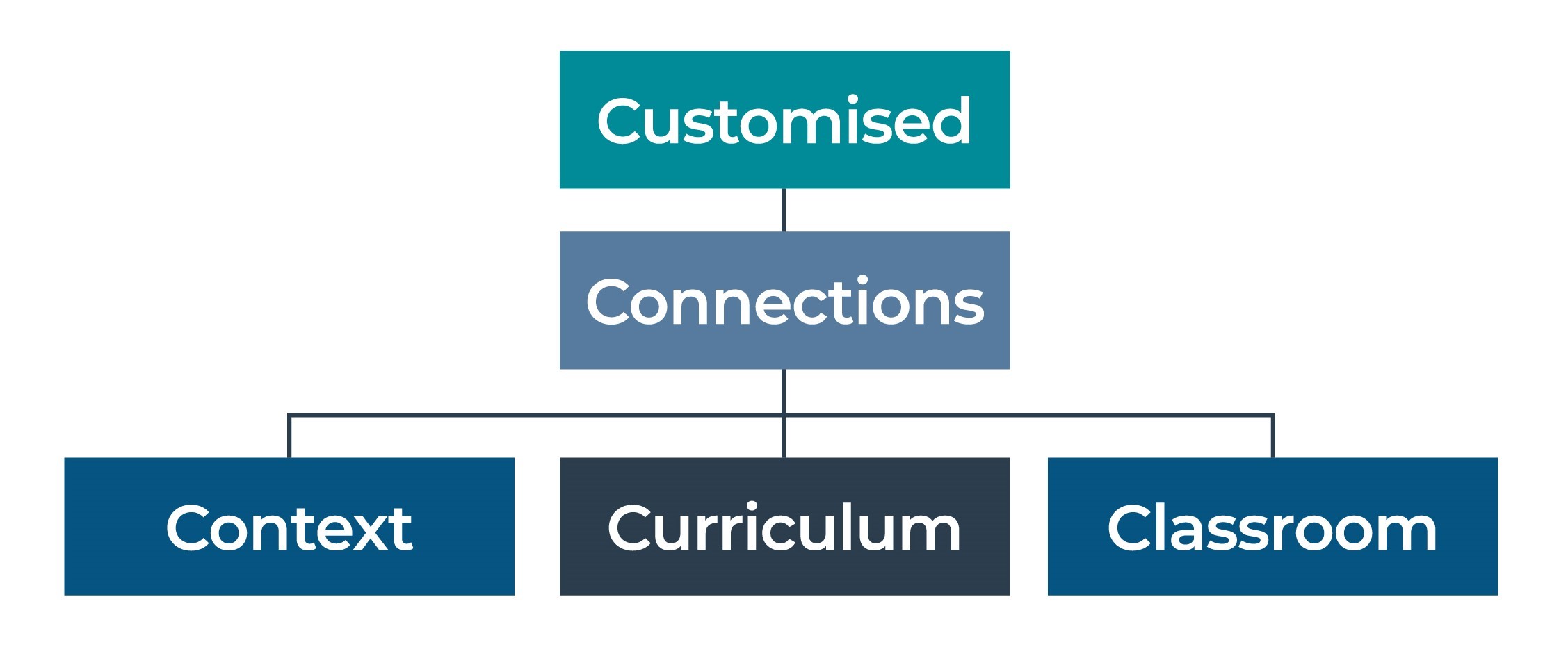The 5C model
The department's 5C model of school-based induction centres on 5 key components: customised, connections, context, curriculum and classroom.
A quality induction customises the support provided to cater for the specific needs of each beginning teacher. It connects teachers according to needs and focuses on context, curriculum and the classroom.

The needs of beginning teachers are diverse and dependent on context. A beginning teacher's personal dispositions and skills can vary, as can their concerns about teaching and their career aspirations. Added to this are the particular challenges that each school, student cohort or class can pose.
A quality induction program accounts for beginning teachers varied and individual needs by customising induction support. At different points throughout the school year, these programs identify the needs of each teacher and then modify, tailor, adapt or personalise support in response. This results in a better fit between teachers' individual needs, school needs, student needs and the induction support provided.
Connections recognise induction as a whole-school responsibility. Instead of putting responsibility onto a single teacher mentor, quality induction programs direct beginning teachers to different teachers as needed. To improve specific areas of professional practice, it is critical that beginning teachers connect to in-school mentors, who are experts in the aspects of teaching practice that have been identified for development.
To develop a beginning teacher's professional identity and wellbeing, they can also be connected to other stakeholders such as principals, supervisors, school-based induction coordinators, buddy teachers, fellow beginning teachers and professional learning networks. By focusing on connections, the beginning teacher's different needs can be targeted through support, at different points in time, by a variety of colleagues.
Context is grounded in a school's distinctive blend of people, practices and policies, resources, routines and relationships, norms, narratives and knowledge, needs and networks. Since most beginning teachers are likely to arrive without an understanding of the context they will be working in, quality induction programs seek to provide this to them, offering general information about, and exposure to:
- the school - its policies, procedures and personnel
- the students - their background, achievements and assessment
- the community - its composition, complexities, key stakeholders and resources.
In fostering an understanding of all of these, quality induction shares information and strategies with beginning teachers through collaboration and cultivates their sense of belonging through collegiality. It also builds their confidence by providing opportunities to demonstrate their efficacy.
When implementing the curriculum, teachers must decide:
- What outcomes will their students attain?
- What experiences are likely to achieve these outcomes?
- How will I organise these experiences?
- How will I know when these outcomes are being attained?
New teachers need considerable time and support to acquire the sophisticated knowledge and skills to make competent decisions about curriculum. Quality induction supports them to do this by building beginning teachers' understanding of pedagogy and practices. Expectations and processes can be clarified, resources are provided and capacity is enhanced through co-planning, co-teaching, professional learning, observation and constructive feedback.
Expert teachers create a classroom where they can focus on teaching and where their students can focus on learning. Expert teachers:
- provide clear, high expectations in a safe, orderly environment
- protect teaching time from unreasonable interruptions
- build productive habits through effective routines
- resolve conflict with and among students quickly and effectively.
Beginning teachers, with their developing experience and repertoire, require the support of quality induction programs to create such a classroom. Quality induction programs clarify expectations of conduct to new teachers, they connect them to evidence-based pedagogical models, and they establish the centrality of student behaviour in the layout of the classroom, the planning of curriculum experiences, and the selection of instructional strategies.
Discover how balanced and comprehensive your school's current induction program is via the 5C assessment tool and see the Research evidence to support the 5C model of school-based induction for more information.